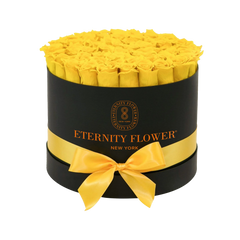Hey there, fellow dog lovers! If you're anything like me, you probably love surrounding yourself with beautiful flowers, both inside and out. They brighten up our homes, our gardens, and let's face it, our Instagram feeds.
But, hold up! Before you go turning your backyard into a botanical wonderland, there's a little something you should know. Not all flowers are dog-friendly. Yep, you heard that right.
Some of those gorgeous blooms could be downright dangerous to your furry best friend. So, let's dive into the world of poisonous flowers for dogs, shall we?
The Hidden Dangers in Your Garden
Imagine this: a sunny day, you're gardening, and your loyal companion is sniffing around, maybe even deciding to take a little nibble on some of your plants. Harmless, right? Well, not always.
Some flowers and plants can be toxic to dogs, causing anything from mild irritation to severe health issues. And because I care about you and your pup, I'm here to spill the tea on which flowers to watch out for.
Read More: Indoor Flowering Plants 101: Easy Steps to a Colorful, Joyful Home!
Lilies

Beautiful? Absolutely. Dog-friendly? Not so much. Certain types of lilies are very toxic to dogs. Lilies are a staple in many gardens and homes, known for their vibrant colors and elegant appearance. However, not all lilies are created equal, especially when it comes to our canine companions.
While daylilies might be non-toxic to dogs, other varieties, such as Easter lilies, Asiatic lilies, and Tiger lilies, are highly toxic. Ingestion of even a small amount of these lilies can lead to severe kidney issues.
Symptoms of lily poisoning can include vomiting, lethargy, and a lack of appetite. If you suspect your dog has ingested lily, it's crucial to seek veterinary care immediately to prevent kidney failure.
Tulips

They're the heralds of spring, but did you know the bulbs of tulips contain toxins that can cause intense stomach upset, drooling, and even heart problems in dogs
The bulbs of tulips contain a compound called tulipalin A and B, which can be toxic to dogs if ingested. The highest concentration of these toxins is found in the bulb, but the entire plant can pose a risk.
Symptoms of tulip ingestion include intense stomach upset, drooling, vomiting, and in severe cases, heart problems and difficulty breathing. If you're a tulip lover, consider keeping these plants out of reach or opting for artificial ones to decorate your home.
Sago Palm

Okay, not exactly a flower, but this plant deserves a mention for its extreme toxicity. Eating just a part of it can lead to vomiting, seizures, and liver failure in dogs.
Actually, every part of this plant is poisonous, with the seeds (or nuts) being the most toxic. Ingestion can lead to symptoms such as vomiting, diarrhea, seizures, liver failure, and potentially death.
The Sago Palm's toxicity is attributed to a substance called cycasin. Given its high toxicity level, it's best to avoid this plant entirely if you have dogs.
Read More: 60 Valentine Day Quotes: Experience the Magic of Love in Words
Azaleas

These pretty little things are a no-go. Azaleas, part of the Rhododendron family, are popular for their beautiful flowers and are a common choice for outdoor landscaping. However, they contain a toxin called grayanotoxin, which can disrupt cellular function and cause a wide range of symptoms in dogs.
These include oral irritation, vomiting, diarrhea, weakness, and in severe cases, central nervous system depression and cardiovascular collapse. Immediate veterinary attention is required if azalea ingestion is suspected to prevent more serious complications.
Oleander

Beautiful but deadly. Oleander is an attractive shrub known for its lovely, fragrant flowers and its ability to thrive in warm climates. However, every part of the oleander plant is toxic to dogs (and humans, too).
The plant contains cardiac glycosides, which can affect the heart's function. Symptoms of oleander poisoning in dogs include gastrointestinal distress, abnormal heart rate, severe muscle tremors, seizures, and potentially death. Due to its high toxicity, it's crucial to keep oleander out of your garden if your dog has access to it.
What to Do If Your Dog Snacks on Something Suspicious

When your dog snacks on something suspicious, it's crucial to act swiftly and calmly. Here's a more detailed guide on what to do in such situations:
- Stay Calm: Your first step is to remain calm. Dogs can pick up on your anxiety, which may exacerbate the situation. A clear head will help you take the necessary actions more effectively.
- Assess the Situation: Try to identify what your dog has ingested. If it's a plant, try to determine which part and how much they have consumed. This information will be crucial for your vet.
- Look for Symptoms: Keep a close eye on your dog for any signs of distress. Symptoms may include vomiting, diarrhea, excessive drooling, lethargy, convulsions, or difficulty breathing. The appearance of symptoms can vary depending on what was ingested and the amount.
- Contact Your Veterinarian Immediately: Even if your dog seems fine, it's important to call your vet as soon as possible. Describe what your dog has ingested, the quantity (if known), and any symptoms they are exhibiting. Your vet can provide you with specific advice on what to do next.
- Follow Veterinary Advice: Your vet may instruct you to bring your dog in for an examination or provide first aid at home. This could include inducing vomiting, but only do this if explicitly instructed by a professional, as it can be dangerous in some cases.
- Collect a Sample: If possible, collect a sample of the plant or substance your dog has ingested. This can help the vet make a more accurate diagnosis and choose the best treatment plan.
- Prevent Further Access: Ensure that your dog no longer has access to the toxic substance. This may involve removing the plant from your garden or ensuring that harmful substances are securely stored away.
- Monitor Your Dog: After the incident, continue to monitor your dog closely for any delayed symptoms or changes in behavior. Follow up with your vet if you have any concerns.
- Prepare an Emergency Kit: For future, consider preparing a pet first aid kit and include the number of your vet, a 24-hour emergency vet clinic, and the Animal Poison Control Center.
- Educate Yourself: Learn about common toxic substances and plants to dogs. This knowledge can help prevent future incidents and keep your furry friend safe.
Remember, quick and informed action can make a significant difference in ensuring the safety and well-being of your dog in case of ingesting something potentially harmful.
Tips for a Dog-Safe Garden

Creating a dog-friendly garden is all about balance. There are numerous dog-safe garden tips. Here's a closer look at some of these options:
- Choose Plants Wisely: Always research before adding new plants to your garden to ensure they are safe for pets.
- Watch for Pests: Some pet-safe plants may attract pests that could be harmful to dogs. Keep an eye out and manage pests through safe methods.
- Create Barriers: If there are areas of your garden you'd like to keep your dog away from, consider using fences or raised beds.
By choosing plants wisely, staying vigilant about potential pests, and setting up barriers as needed, you can ensure your garden is a safe, enjoyable space for your dog. Remember, the goal is to create an environment where your pets can explore and relax without any risk to their health.
Read More: 7 Simple Flower Bed Ideas Front of House: Beauty at Your Doorstep!
Conclusion
Understanding the risks of poisonous flowers for dogs is crucial for keeping your pets safe. If your dog ingests a toxic plant, seek veterinary care immediately. Opt for pet-safe plants to ensure your home and garden are both beautiful and secure for all family members. Stay informed and vigilant to protect your furry friends from harm.


























